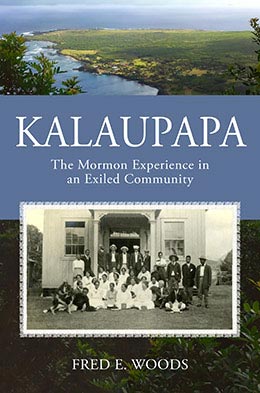Appendix E
Select Chronology of Key Events
[1] 1778 Captain James Cook makes contact with the inhabitants of the Sandwich Islands.
1805 Joseph Smith Jr., founder of the Church of Jesus Christ of Latter-day Saints, is born in Sharon, Vermont.
1810 Kamehameha I, the chief of the island of Hawai‘i, defeats his island rivals and proclaims himself monarch over all the Hawaiian Islands.
1813 Jonathan Hawai‘i Napela, the first LDS ecclesiastical leader at Kalaupapa, is born.
1819 Liholiho, son of Kamehameha, begins to reign. He and his mother end the ancient kapu system that previously governed Hawaiian culture, which influences spread of Christianity to fill void in the traditional social fabric of the Hawaiian Islands.
1820 American Protestant missionaries arrive in Hawai‘i to preach Christianity in the same year that Joseph Smith Jr. shares his First Vision experience.
1827 First Catholic missionaries arrive in Hawai‘i. Joseph Smith Jr. charged with bringing forth the Book of Mormon record.
1830 The Church of Jesus Christ of Latter-day Saints is officially organized, with Joseph Smith Jr. sustained as its ecclesiastical leader.
1838 Barbara Koob (Mother Marianne Cope) is born in Heppenheim, Germany.
1840 Joseph de Veuster (Father Damien) is born in Ninde, Belgium.
1850 Mormon missionaries arrive in Hawai‘i. Hawai‘i Board of Health is organized to protect the health of the people.
1853 Calvinist Church is erected on the Kalaupapa peninsula.
1865 “An Act to Prevent the Spread of Leprosy” is passed, wherein land is set aside on the peninsula of Moloka‘i for the isolation of Hansen’s disease. The village of Lā‘ie on the Hawaiian island of O‘ahu is designated as a gathering place for the Latter-day Saints.
1866 Twelve patients (first group) are sent to Kalawao on the Kalaupapa peninsula. The Protestant congregation of Siloama, the Church of the Healing Spring, is organized.
1871 The Siloama Church is dedicated.
1872 St. Philomena Church is established in Kalawao.
1873 Father Damien arrives at Kalaupapa. Jonathan and Kitty Napela also arrive the same year, and Jonathan is called as the ecclesiastical leader of the LDS congregation. Dr. Gerard Hansen, a Norwegian physician, identifies bacillus (mycobacterium leprae). Later, leprosy will be called Hansen’s disease.
1879 Jonathan and Kitty Napela pass away.
1886 Arrival of Brother Ira Dutton to assist Father Damien.
1888 Mother Marianne Cope arrives at Kalaupapa with other Catholic sisters to provide assistance at the Bishop Home for female patients.
1889 Father Damien passes away.
1893 Hawaiian monarchy is overthrown.
1894 Baldwin Home for boys and incapacitated male adults opens at Kalawao.
1895 M. O. Monsarrat map is published, showing worship places of Catholic, Protestant, and Mormons placed side-by-side in Kalawao as well as chapels in Kalaupapa.
1898 The United States annexes the Hawaiian Islands.
1900 The Territory of Hawai‘i is established. St. Francis Church at Kalaupapa is dedicated.
1901 Bay View Home for the incapacitated and elderly is erected at Kalaupapa.
1904 New LDS chapels in both the villages of Kalawao and Kalaupapa are erected. Latter-day Saint members total more than two hundred.
1906 St. Francis Catholic Church burns down.
1908 A general hospital is erected at Kalaupapa. The new St. Francis church is finished.
1910 The McVeigh Home is opened for white foreigners.
1915 A social hall and the Kanaana Hou Church are erected at Kalaupapa.
1918 Mother Marianne Cope passes away.
1919 Dedication of the temple in Lā‘ie.
1928 The McVeigh Home burns down. Mormon congregation is listed at ninety-eight members.
1936 Father Damien’s body is exhumed and transported to Leuven, Belgium, for burial.
1938 Beatification interviews commence toward the canonization of Joseph de Veuster as Saint Damien at Kalaupapa (Protestants, Catholics, Mormons interviewed).
1943 William Waddoups (former LDS mission president and temple president in Lā‘ie) is appointed as the Kalaupapa resident superintendent.
1946 Tidal wave reaches the Kalaupapa shoreline. Sulfone drugs are initiated in the settlement.
1947 Lawrence M. Judd (former Hawai‘i territorial governor) is appointed as the Kalaupapa resident superintendent. He begins to break down social barriers.
1950 The Bay View Home and the Baldwin Home are merged together.
1965 Kalaupapa LDS chapel is dedicated. (Protestants and Catholics assisted their Mormon friends in the construction of the chapel.)
1966 The Siloama Church in Kalawao is reconstructed. (Catholics and Mormons helped their Protestant friends in the reconstruction process.)
1969 Hawai‘i Board of Health decides to end the isolation of patients with Hansen’s disease.
1978 Jack Sing Kong is awarded the BYU–Hawaii distinguished service award for the decades he spent as the LDS ecclesiastical leader at Kalaupapa and for his service rendered to the community via the Lions Club as well as his general selfless service.
1980 Kalaupapa National Historical Park is established.
1995 Relic of Father Damien’s right hand returned to Kalawao for reburial in his original grave.
2003 Ka ‘Ohana O Kalaupapa established as a nonprofit organization dedicated to promoting the value and dignity of every person who was exiled to the Kalaupapa peninsula.
2009 The Kalaupapa Memorial Act is signed by President Barack Obama to establish a memorial that lists all victims of Hansen’s disease that were exiled to the Kalaupapa peninsula. Father Damien is canonized by the Roman Catholic Church.
2012 Mother Marianne is canonized by the Roman Catholic Church.
2016 Sesquicentennial anniversary of the first patients being sent to the Kalaupapa peninsula.
Notes
[1] . Distillation and adaption of “Chronology of Important Events,” Linda W. Greene, Exile in Paradise: The Isolation of Hawai’i’s Leprosy Victims and Development of the Kalaupapa Settlement 1865 to the present (Moloka‘i, HI: National Historic Park, 1985), xxiii–xxxi.
